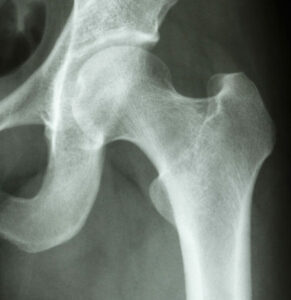Bone density scans are low-dose ionising radiation modalities that measure the strength of bones, which is determined by the presence of minerals such as calcium and phosphorous. This is mainly to diagnose osteopenia and osteoporosis, the abnormal loss of bone tissue resulting in fragile bones, and to determine bone fracture risks. The lumbar spine, hips and the non-dominant forearm are usually scanned. These scans are painless, however if you have an injury or painful clinical condition, you may experience some discomfort.
The output of a bone density test is a number called a T-score. Normal is zero (0). The more negative the number, the weaker the bones and the more likely they are to break. A T-score of -2.5 or below indicates osteoporosis, assuming that there is no clinical indication for the low T-score.
Risk factors for osteoporosis include early and post-menopausal women not taking estrogen, long-term steroid use, certain diseases, and medications that cause bone loss.
